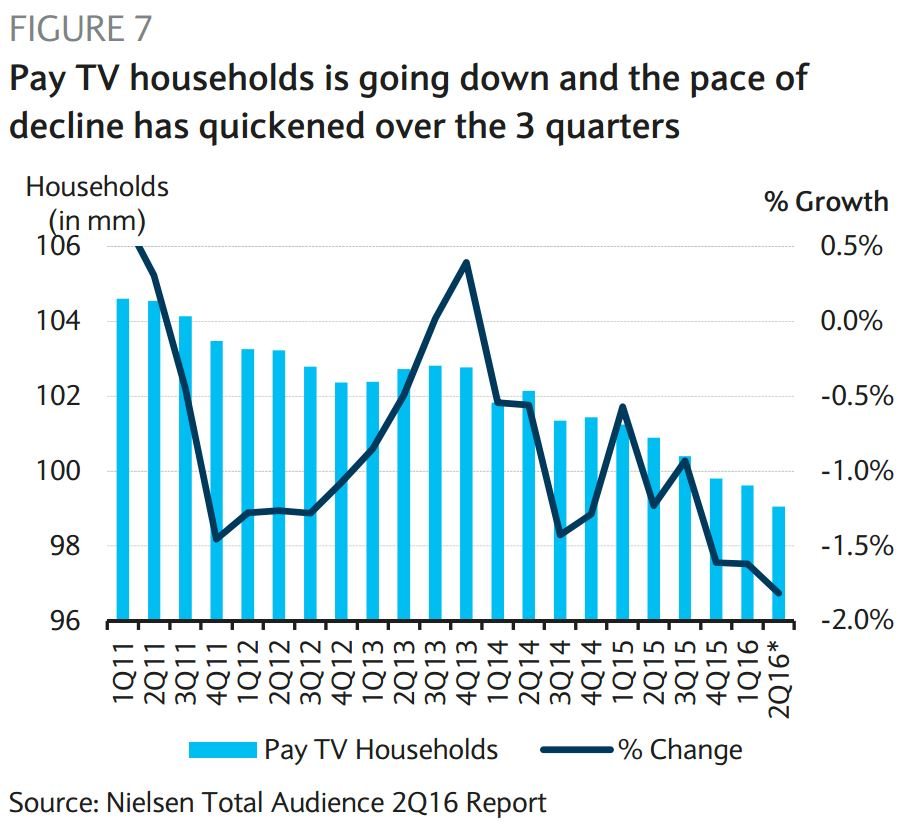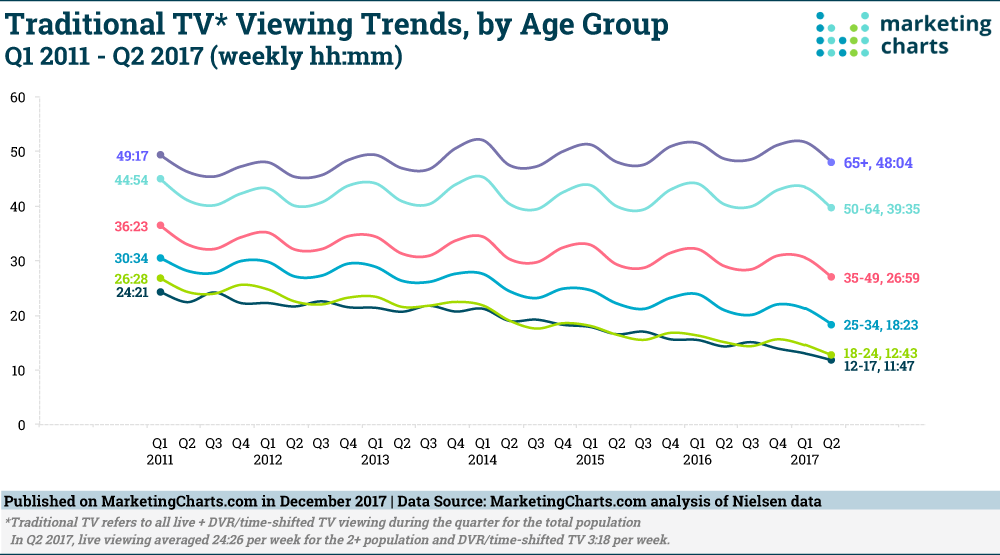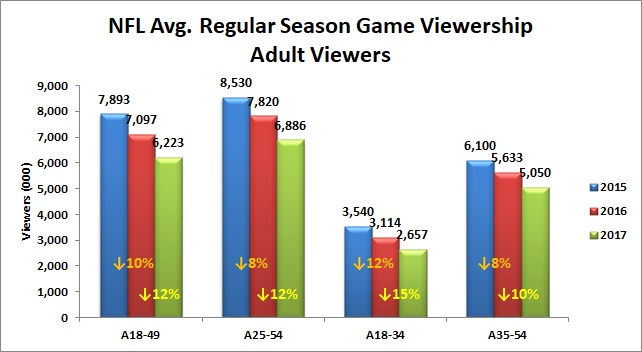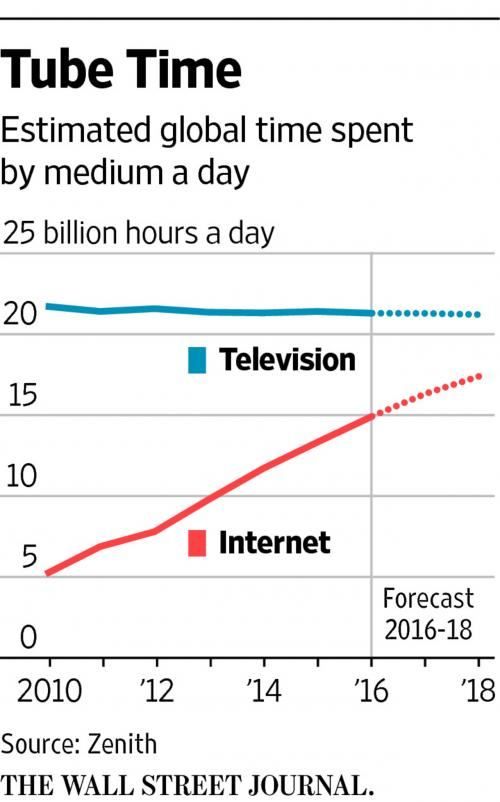The times are changing. Generation gaps are getting larger. New technology is arriving at an accelerating pace, with the younger generations adopting it with open arms.
Starting with Cable
Cable isn’t what it used to be. Nowadays, people are turning away from traditional TV. Cable used to be the one-stop-shop for all news, entertainment, and sports related content. Subscription numbers are at an all time low as people are turning off their sets and subscribing to cheaper services. With the advent of YouTube, Netflix, Hulu, and all the ever increasing availability of on-demand content, Cable Television seems to be losing ground to what the internet can bring to the table: Endless, immediate, and personalized content.
The younger the viewer, the steeper the decline. To Millennials and Gen-Xers, flipping through channels hoping to land on something interesting is antiquated. To them, YouTube and Netflix can offer quality, personalized content right at their fingertips, for a fraction of the cost. One thing is becoming clear: The younger generation is leading the way to becoming an internet-based society.

The younger the viewer, the steeper the decline. To Millenials and Gen-Xers, flipping through channels hoping to land on something interesting is antiquated. To them, YouTube and Netflix can offer quality, personalized content right at their fingertips, for a fraction of the cost. One thing is becoming clear: The younger generation is leading the way to becoming an internet-based society.

Televised Sports appear to be traditional TV’s saving grace
Sports have become the biggest draw to traditional television. Among last year’s 50 most-watched telecasts, 44 were football, basketball, baseball, or the Olympics. Especially in America, televised sports is still among the leading genres on primetime TV programming, with Super Bowl 50 being the leading single telecast TV program in 2016. Unfortunately, this does not mean that Pro-Sport viewership is doing well. It is simply just doing not as bad than the rest of the Cable Television, comparatively. Traditional television has been losing reach. Over the past five years, viewership among millennials has plummeted by more than 40%, according to Nielsen data. Among older millennials (25 to 34) and Gen Xers (35 to 49), it is down 28% and 13%, respectively. Only over-50s are sticking with their clickers.
The streaming of pro sports has not yet made it onto the internet, and is the likely the reason why pro sports viewership has been on a steady decline for the past 5 years.

Cord-cutters have ushered in a new era in which streaming services and social networks such as YouTube, Facebook, Twitter and Amazon are becoming sources of live sports and replacing cable TV. Traditional cable broadcast networks, such as ESPN, are seeing revenue from flagship programs decline, and are losing substantial numbers of subscribers.

The shift towards digital-first distribution platforms allows for commentary from fans and athletes to be integrated directly into live sports streams, opening up unprecedented opportunities for personalization and interactivity.

The writing on the wall is clear. The current demand for Cable is propped up by the older generations, and their lack of internet literacy. On-Demand streaming services are quickly becoming dominant, as they are much more apt to deliver a product to a consumer that they actually want, thanks to the personalizable nature of such services. The internet-savvy generation is quickly becoming the target consumer for the pro-sports leagues. The value of televised sports being ONLY on cable is losing out to the value of being on the internet.

Betting on the Future: Attention is on the Internet
Pro-sports leagues, the NFL, MLB, NBA, NHL etc. are always looking for how to grow their viewer-base. As yearly ratings for Cable continues to fall, and their viewership with it, Pro-Sports leagues are going to decide that Cable is no longer giving them the attention that they need to support their industry.
There is a finite amount of attention, in the world, at any given moment, and the internet is taking a larger and larger share of that attention as new technology comes. If pro sports leagues wants to continue growing their viewer-base, they have no choice: enter the world of online streaming.
Betting on the Future: Personalized Content
Hyper-Personalization is one of the biggest trends in 21st century innovation. Starbucks will make your 14-adjective coffee. Amazon will curate items they know you will love. Twitch lets you pick your favorite streamer for your favorite game.
The one-size-fits-all industries are losing ground to those that can personalize their service or product to their customers. Personalized products are simply marketable to more people, for obvious reasons. There is a wider available audience because a company can change their product to fit their customers needs.
Lets be real: No one is truly content with their favorite sports team’s commentators. At the very least, they can live with them. When a pair of commentators are the two commentators for a million viewers, they have to walk the middle road. No personalization, because if commentators personalize for one type of viewer, they alienate others.
SportsCastr says: Let the be as many commentators as there needs to be! Allow commentators to gear themselves specifically to the audience they want to attract. Dare them to innovate! The quality of commentary over time will always improve, because now there is a free market of commentary available to the user: Let the best commentators win!
The SportsCastr platform allows viewers to select which broadcaster they wish to have call, recap or make predictions on a game. Streams are enhanced by features such as broadcast quality scoreboards that update in real-time and on-air motion graphics that simulate a professional, live studio experience. SportsCastr is designed to encourage users to chat and interact with the broadcaster and other viewers during a live broadcast. SportsCastr supports a multitude of user types — fans, athletes, sports reporters, families, students — to live stream during games, share reactions and create original commentary.
Betting on the Future: Integrating Cryptocurrency
While the mass adoption of online streaming seems to be around the corner, the adoption of cryptocurrency also appears to be arriving at an unexpectedly fast pace. Another new technological innovation, being quickly adopted by Millennials, Cryptocurrency is positioning itself as a foundational technology for new industries to be built on top of. The efficiency of peer-to-peer payments without an intermediary to slow down transactions can enable platforms like SportsCastr to immediately reward content producers, as they produce.
FanChain is designed to have an easy-to-use platform that provides incentives for user adoption. By having an App simplify the token payment process, the sending and receiving of FanChain tokens will be similar to using Venmo to pay your friends!
A cryptocurrency token enables a number of key features that are required in this new world of consumer-produced content. The FanChain token will be integrated into the SportsCastr app for tipping/paying for access to streamers who are commentating on sports games. Additionally, fan-created content that provides value to readers, watchers, and sports enthusiasts will be rewarded with FanChain tokens which are redeemable for merchandise, tickets, and other items in the Fan Prize store. Others who wish do create sports content full time, people like authors, blog operators, or publishers can exchange FanChain tokens on the secondary market for their own income.
The possibilities are endless.
Curious for more? Join the discussions 👇
Join us in our Telegram: https://t.me/fanchain
BitcoinTalk ANN: https://bitcointalk.org/index.php?topic=4423520.0
Offical FanChain website: https://fanchain.com/
Official SportsCastr website: https://sportscastr.com/







